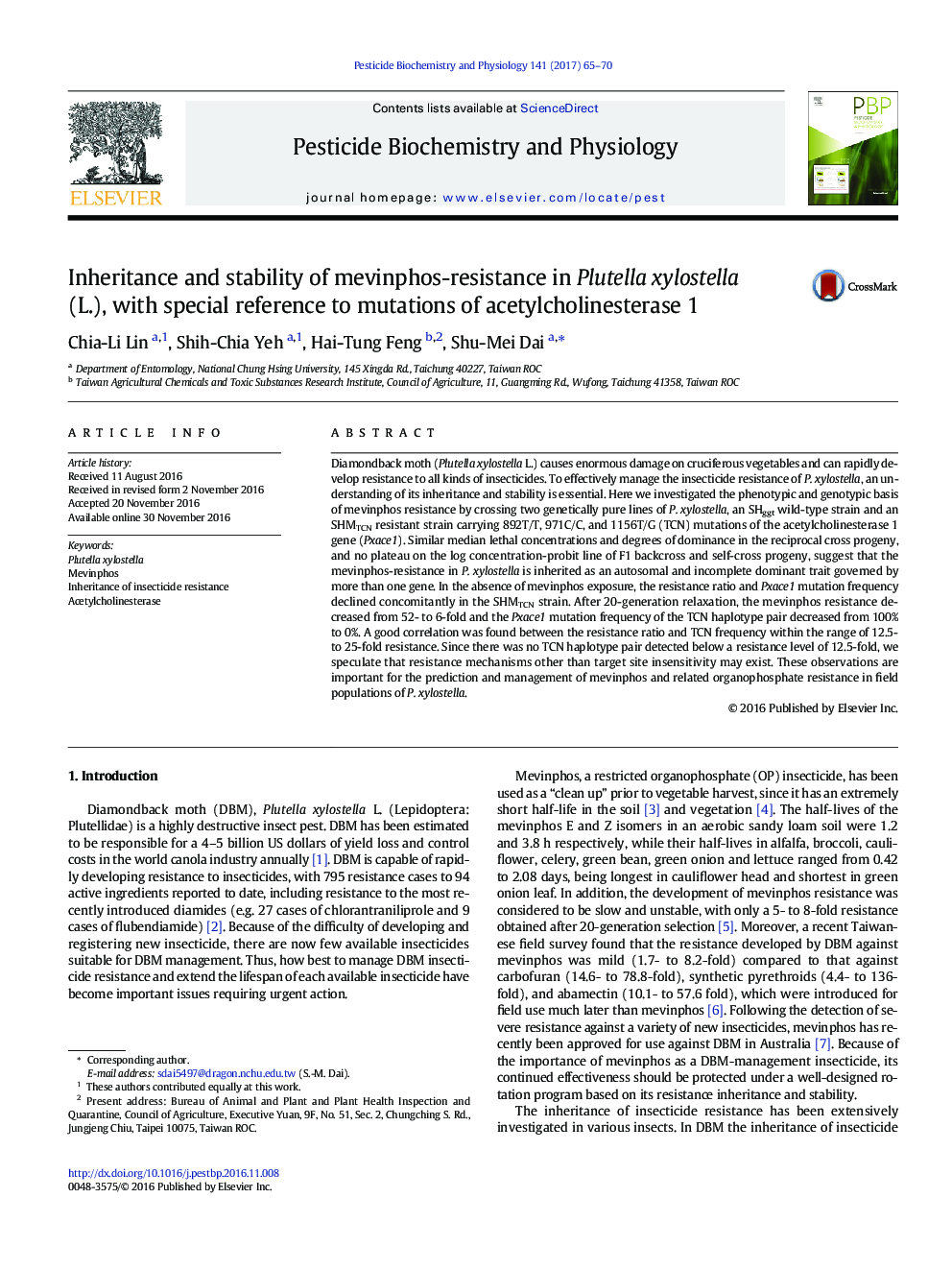| کد مقاله | کد نشریه | سال انتشار | مقاله انگلیسی | نسخه تمام متن |
|---|---|---|---|---|
| 5514824 | 1541758 | 2017 | 6 صفحه PDF | دانلود رایگان |

- Mevinphos resistance in DBM is inherited as an autosomal and incompletely dominant trait.
- More than one genes involved in this resistance was supported by both phenotypic and genotypic evidences.
- Mevinphos resistance in DBM can be reversed by removal of selection pressure.
Diamondback moth (Plutella xylostella L.) causes enormous damage on cruciferous vegetables and can rapidly develop resistance to all kinds of insecticides. To effectively manage the insecticide resistance of P. xylostella, an understanding of its inheritance and stability is essential. Here we investigated the phenotypic and genotypic basis of mevinphos resistance by crossing two genetically pure lines of P. xylostella, an SHggt wild-type strain and an SHMTCN resistant strain carrying 892T/T, 971C/C, and 1156T/G (TCN) mutations of the acetylcholinesterase 1 gene (Pxace1). Similar median lethal concentrations and degrees of dominance in the reciprocal cross progeny, and no plateau on the log concentration-probit line of F1 backcross and self-cross progeny, suggest that the mevinphos-resistance in P. xylostella is inherited as an autosomal and incomplete dominant trait governed by more than one gene. In the absence of mevinphos exposure, the resistance ratio and Pxace1 mutation frequency declined concomitantly in the SHMTCN strain. After 20-generation relaxation, the mevinphos resistance decreased from 52- to 6-fold and the Pxace1 mutation frequency of the TCN haplotype pair decreased from 100% to 0%. A good correlation was found between the resistance ratio and TCN frequency within the range of 12.5- to 25-fold resistance. Since there was no TCN haplotype pair detected below a resistance level of 12.5-fold, we speculate that resistance mechanisms other than target site insensitivity may exist. These observations are important for the prediction and management of mevinphos and related organophosphate resistance in field populations of P. xylostella.
201
Journal: Pesticide Biochemistry and Physiology - Volume 141, September 2017, Pages 65-70